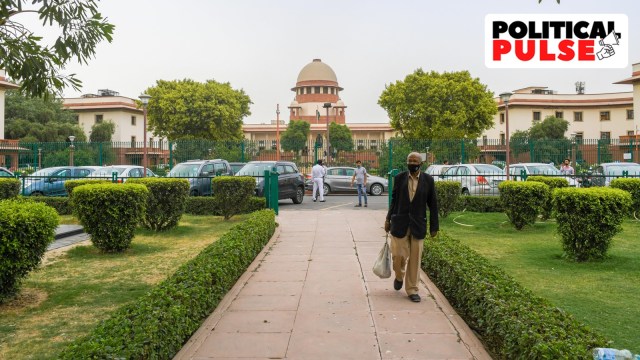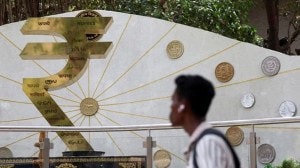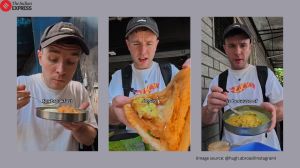A crucial aspect of the Supreme Court’s landmark verdict empowering states to make sub-classifications within the Scheduled Caste (SC) category is that the court has held that such a process has to be undertaken based on “quantifiable and demonstrable data” on the levels of backwardness and representation in government services and education institutions and not on “whims or as a matter of political expediency”.
However, finding “quantifiable and demonstrable data” is easier said than done if efforts to examine the sub-categorisation of Other Backward Classes (OBCs) are something to go by. Hampered by a lack of credible and expansive data, the reports of both the four-member Rohini Commission and the Raghavendra Kumar panel are limited in scope. While there has not been any movement on the recommendations of the Rohini Commission report since it was submitted on July 31, 2023, the Raghavendra Kumar panel report in Uttar Pradesh has been lying in cold storage since 2018.

Caste-wise population and caste-wise representation are two basic data sets required to decide sub-groups. While SCs and Scheduled Tribes are enumerated during the Census — last held in 2011 — there has not been any effort to gather data on caste-wise representation in government jobs and educational institutions. For OBCs, both sets of data are not collected and, in recent months, changing this has formed the crux of the Opposition’s politically charged demand for a nationwide caste census. Now, with this Supreme Court verdict, expanding the ambit of this caste census becomes a real possibility, fuelling the battles between the BJP-led government and the Opposition in the coming months.
The Narendra Modi government appointed the commission headed by Justice Rohini, a retired Chief Justice of the Delhi High Court, on October 2, 2017, to examine if the perception that only a few affluent of the more than 2,600 OBC groups listed in the Centra List had bagged most of the benefits of 27% reservation for OBCs. The argument for sub-categorisation — or creating categories within OBCs for reservation — is that it will ensure “equitable distribution” of representation among all OBC groups.
In 2018, the commission analysed the data of 1.3 lakh central government jobs under the OBC quota over the preceding five years, and OBC admissions to central higher education institutions, including universities, IITs, NITs, IIMs and AIIMS, over the preceding three years. The analysis showed that 97% of all jobs and education seats have gone to 25% of OBC castes and 24.95% have gone to just 10 OBC communities.
After 13 extensions to its tenure, the Commission submitted its report to the government on July 31, 2023. A source in the Ministry of Social Justice Ministry, the nodal ministry for the exercise, termed the report “politically sensitive” and said, “We have no idea what will be done based on the report.”
The year after the Modi government set up the Rohini Commission, in May 2018 the Yogi Adityanath government in Uttar Pradesh set up the Justice (retired) Raghvendra Kumar panel. The committee set up the report five months later but its recommendations have not been made public yet. Sources in the UP government said the panel recommended that the 79 OBC groups in the state be sub-categorised into three groups, namely the Backward Class (Yadavs, Kurmis, Jaats etc), More Backward Classes (Gujars, Lodhs, Kachhis, Kushwahas, Shakyas, Sahus etc); and Most Backward Classes (Nishads, Rajbhars, Banjaras, Binds, Kahars, Kashyaps, Qureshis etc). The panel recommended 7%, 11%, and 9% quota from the OBC reservation pie.
Story continues below this ad
However, the report has not seen the light of the day since then. “It is in the process of implementation. We have assigned a senior IAS to examine it,” UP Minister of State (Independent Charge) for Backward Classes Welfare Narendra Kashyap told The Indian Express.
In 2001, the UP government led by Rajnath Singh attempted to rectify the matter of lack of data but the numbers collected – during a Social Justice Week that the state government had organised – were flawed. Based on that data, a committee headed by the late BJP MP Hukum Singh recommended two SC sub-groups of Jatavs and non-Jatavs (65 castes) be created and given 10% and 11% reservation, respectively. The Hukum Singh Committee also suggested the formation of three OBC sub-groups: Group A (only Yadavs); Group B (eight castes such as Jaats, Kurmis, Gujars, Lodhs etc), and Group C (the rest of the OBC groups). The Rajnath Singh government moved fast to implement the report’s proposals but they were challenged in the Supreme Court. When the Mayawati government took charge in May 2002, it rejected the report.

































